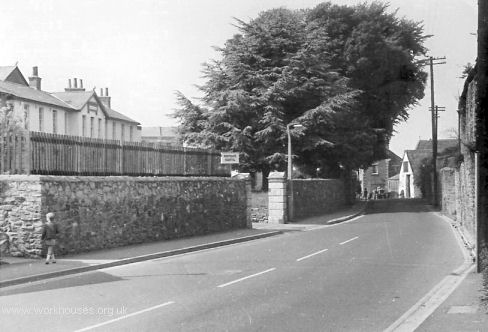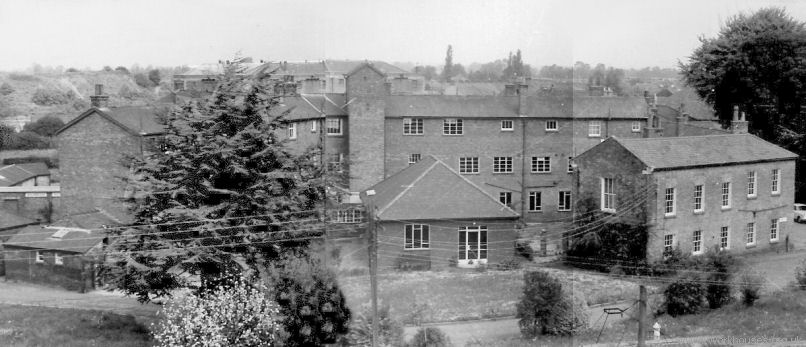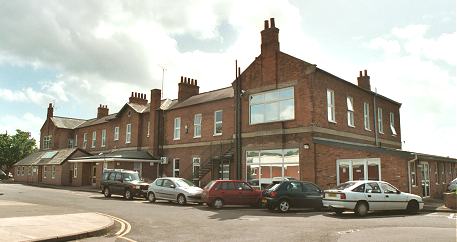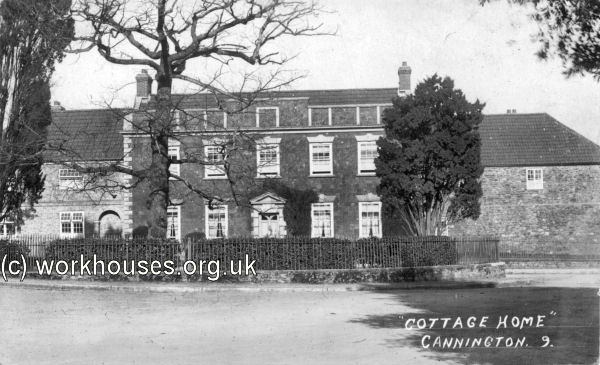Bridgwater, Somerset
Up to 1834
A parliamentary report of 1777 recorded parish workhouses in operation at Bridgwater (for up to 80 inmates), Lyng (10), Middlezoy (10), Overstowey (20), North Petherton (90), Nether Stowey (14), and Stockland Bristol (8).
Bridgwater's parish workhouse stood on Old Taunton Road, near the junction with St Saviour's Avenue. The building, which dated from 1693, was originally the south gate almshouse but was gradually taken over as a workhouse. By 1831, it could accommodate 86 people inmates.
After 1834
The Bridgwater (occasionally seen spelt as Bridgewater) Poor Law Union formally came into being on 11th May 1836. Its operation was overseen by an elected Board of Guardians, 48 in number, representing its 40 constituent parishes as listed below (figures in brackets indicate numbers of Guardians if more than one):
County of Somerset:
Ashcot, Asholt, Bawdrip, Bridgwater (5), Broomfield, Cannington (2), Catcot, Charlinch, Chedzoy, Chilton-under-Poldon, Chilton Trinity, Cossington, Durleigh, Edington, Hamlets of Edstock and Beer, Enmore, Fiddington, Goathurst, Greinton, Huntspill (2), Lyng, Michael Church, Middlezoy, Moorlinch, Othery, Pawlet, North Petherton (3), Otterhampton, Overstowey, Puriton with Woollavington, Shapwick, Spaxton, Stockland Bristol, Stowell, Nether Stowey, Sutton Mallet, Thurloxton, Wembdon, Woolavington, Western Zoyland.
Later Addition:Chilton Common (from 1858).
The population falling within the Union at the 1831 census had been 28,566 with parishes ranging in size from the Hamlets of Edstock and Beer (population 13) to Bridgwater itself (combined total of 7,807). The average annual poor-rate expenditure for the period 1833-35 had been £13,387 or 9s.4d. per head of the population.
In the summer of 1836, while a new workhouse was under construction, the old parish workhouses in Bridgwater and North Petherton were pressed into service as workhouses for the new union. Bridgwater was calculated as being able to accommodate 112, although as it only had 40 beds, this relied on at least two adults or six children sharing each bed. North Petherton was estimated as being able to accommodate 100 children. The remainder of the union's parishes were permitted to dispose of their old workhouses
In the winter of 1836-7, a severe outbreak of dysentery led to many deaths amongst the inmates. Local anti-new-poor-law activist John Bowen began a campaign against conditions in the workhouse which he described as "murderous pesthouses". He blamed the inmates' diet for their illness, especially its large component of gruel. Bowen also accused the Bridgwater Guardians of deliberating placing a vagrant with fever in the workhouse with the aim of infecting and killing inmates. New inmates had also continued to be admitted to the workhouse while an outbreak of typhus fever was raging, resulting in the death of three children from one family. One inmate, Drusilla Winn, a washer-woman who had previously received 4s.6d a week out-relief from the union, had the payments withdrawn and was offered the workhouse instead. She alleged (according to Bowen):
- That her children were in perfect health at the time she went into the Union-house.
- That her eldest child, seven and a-half years of age, was immediately taken from her, and she thinks he was very unhappy.
- That his first complaint to her was of a pain in his head. After remaining in bed for two days, the nurse drove him down the staircase without shoes or stockings, through the chapel, which was wet, having just been washed, saying he was not ill.
- That the schoolmaster, who is very kind to the children, immediately carried him back to his bed. He never got out of it after. He died in a few days.
A new Bridgwater Union workhouse was erected in 1836-7 at the west side of Northgate in Bridgwater. In 1836, the Poor Law Commissioners authorized an expenditure of £7,500 on construction of the building which was to accommodate 300 inmates. It was designed by Sampson Kempthorne and was based on his model "Y" plan published by the Poor Law Commissioners in 1835. The site location and layout are shown on the 1904 map below:

Bridgwater Site, 1904.
An entrance block stood at the east, facing onto Northgate.

Bridgwater entrance block from the south-east, 1980s
© Enterprise Resource Centre, Bridgwater.
To the rear, three accommodation wings radiated from a central supervisory hub, with the areas between the wings forming segregated exercise yards for the different classes of inmates.

Bridgwater main building from the south-east, 1980s
© Enterprise Resource Centre, Bridgwater.
Service buildings and workshops formed the outer perimeter of the building. A two-storey infirmary block was added at the west of the workhouse, and an isolation hospital to the south-east.

Bridgwater infirmary block from the north-east, 2002
© Peter Higginbotham.

Bridgwater isolation block from the south-west, 2002
© Peter Higginbotham.
A mortuary was located at the south-west of the isolation hospital.

Bridgwater general view from the south-east, 1980s
© Enterprise Resource Centre, Bridgwater.
Although much larger than the old buildings it replaced, the new workhouse building was another target of John Bowen's attacks. He quoted official figures which showed that prison cells gave convicts 1000 cubic feet of space each, whilst workhouse dormitories provided only 103 cubic feet per head. Convicts also received 292 ounces of food per week while workhouse inmates received 145 ounces, half the amount.
A decade later, conditions in the workhouse appear not to have improved, as shown by an extract from the Bridgwater Board of Guardians minute book, dated February 20th 1849:
A rather rosier picture of life in the workhouse is painted by the Western Gazette of 30th December 1887:
The former workhouse later became Northgate Hospital. The main workhouse building was demolished in the late 1980s. The old infirmary block became Blake Hospital, and the isolation hospital became Sedgemoor Register Office. The main part of the site was occupied by the Bridgwater Enterprise Centre until 2015 when the remaining buildings were demolished.
The master and matron of Bridgwater Workhouse from about 1861 to 1882 were the parents of Edwin Henry Murrant Junior, better known as "Breaker Morant". His father, Edwin Henry Murrant died in September 1864 before his son was born in December of that year. His mother Catherine, stayed on as Matron until 1882 when she resigned, having been elected to the position for life in 1869.
Cannington Cottage Home
In the early 1900s, the Bridgwater Union established a cottage home in a house at the southern end of Rodway in Cannington. The home accommodated the union's pauper children away from the influence of workhouse. In 1914, the Matron was Mrs Wakeley.

Cannington Cottage Home, c.1910
© Peter Higginbotham.

Former Cannington Cottage Home, 2005
© Peter Higginbotham.
Staff
- 1881 Census
- 1897 — Master: R Sheppard; Matron: Mrs Sheppard; Chaplain: Rev George Trevor; Medical Officer: HM Kemmis.
- 1914, 1919 — Master: John Arthur Barrell; Matron: Mrs Lucy Eleanor Barrell; Chaplain: Rev WE Catlow M.A.; Medical Officer: Penros Lanyon Watkin Williams.
Inmates
Records
Note: many repositories impose a closure period of up to 100 years for records identifying individuals. Before travelling a long distance, always check that the records you want to consult will be available.
- Somerset Heritage Centre, Brunel Way, Langford Mead, Norton Fitzwarren, Taunton TA2 6SF. Holdings include: Guardians' minute books (1836-1930); Admissions and discharges (1916-31); Births and deaths (1866-1914); Creed register (1900-27); etc.
Bibliography
- Buchanan, CA (1987) John Bowen and the Bridgwater Scandal (in Somerset Archaeology and Natural History, 131, 181-201.
Links
- Bridgwater Heritage website has transcripts of the John Bowen's letters to the Times and of the 1838 official inquiry into the conditions at the workhouse.
Thanks
- Thanks to Bridgwater Enterprise Resource Centre for photos of the former workhouse.
Unless otherwise indicated, this page () is copyright Peter Higginbotham. Contents may not be reproduced without permission.


